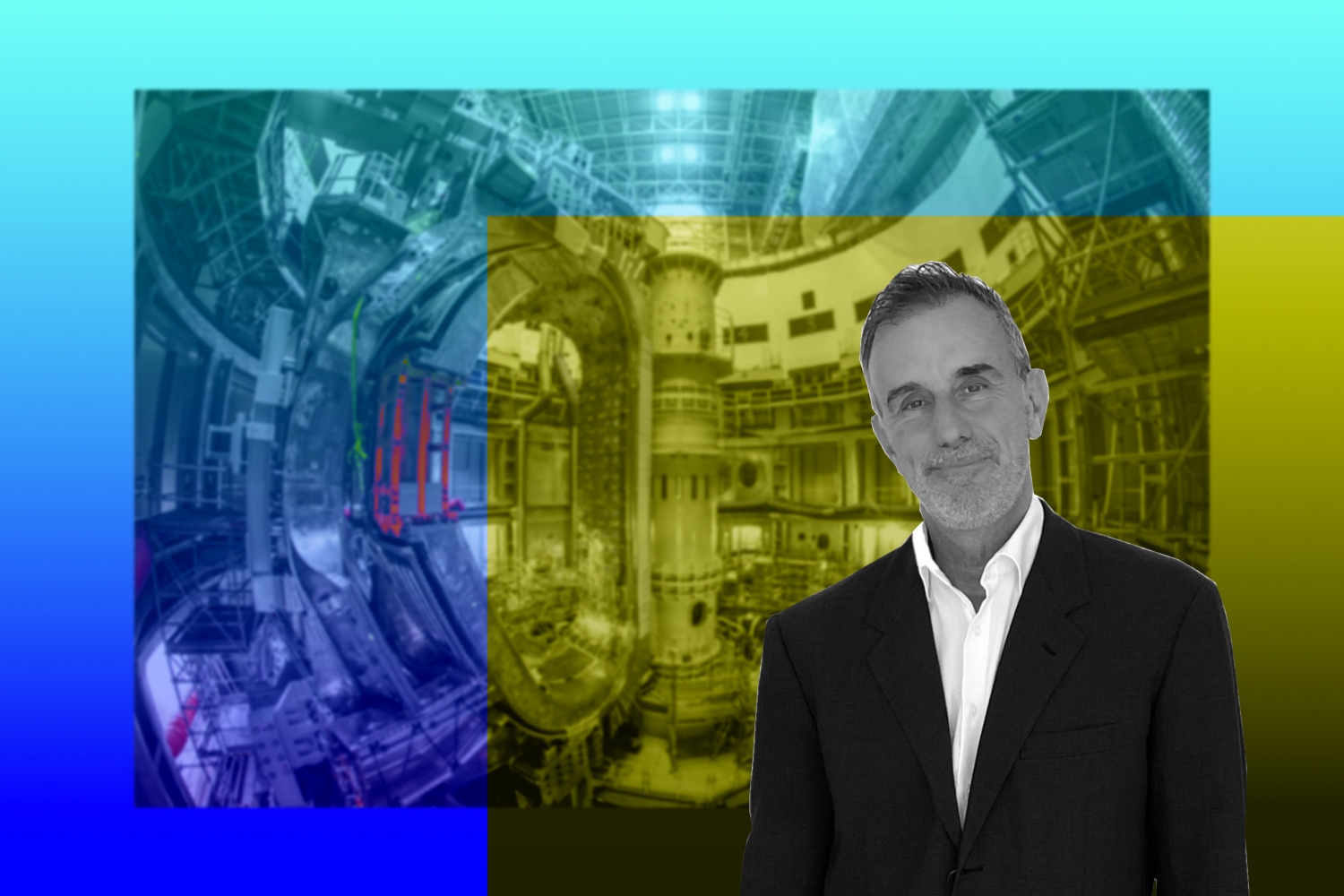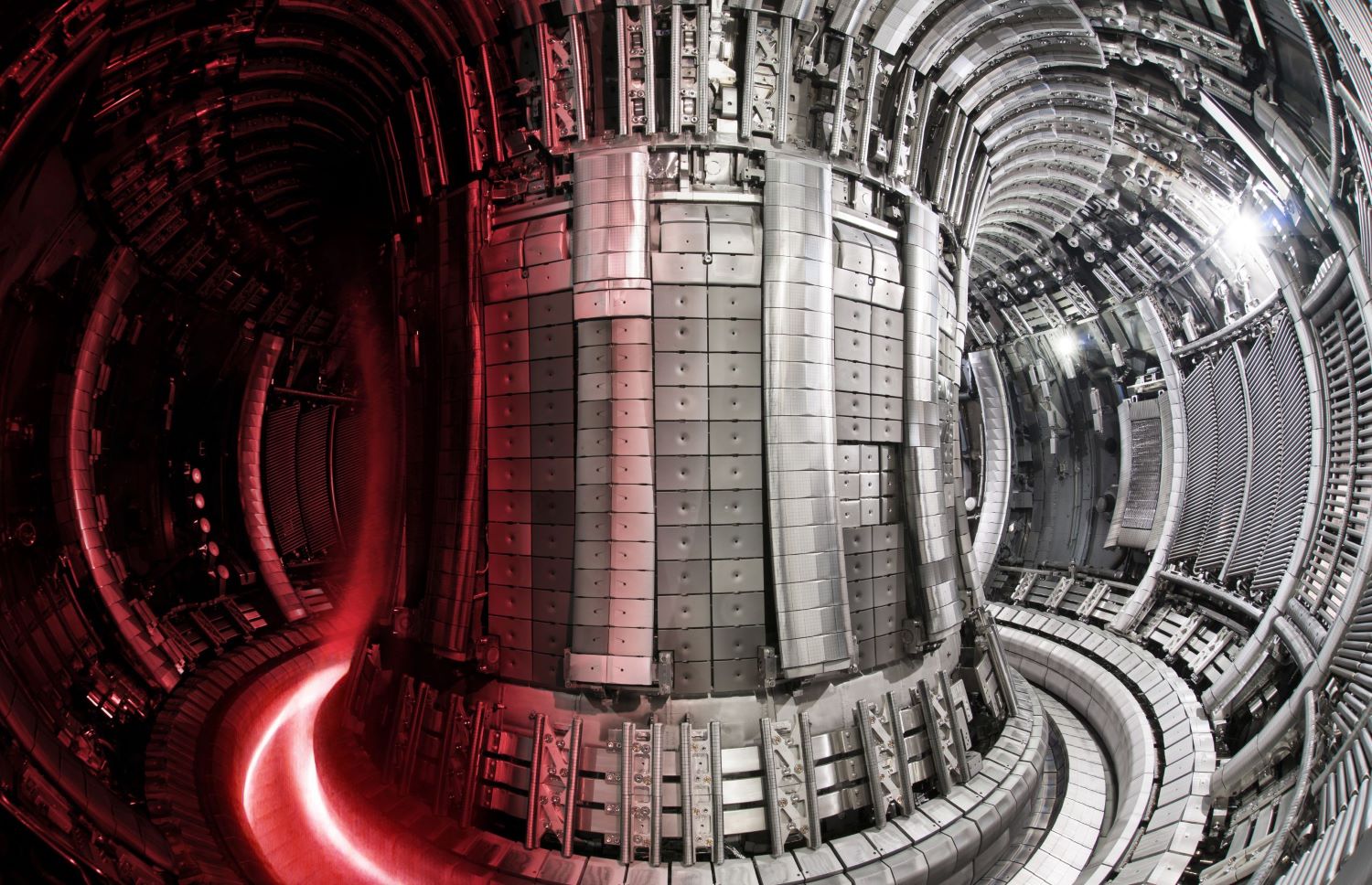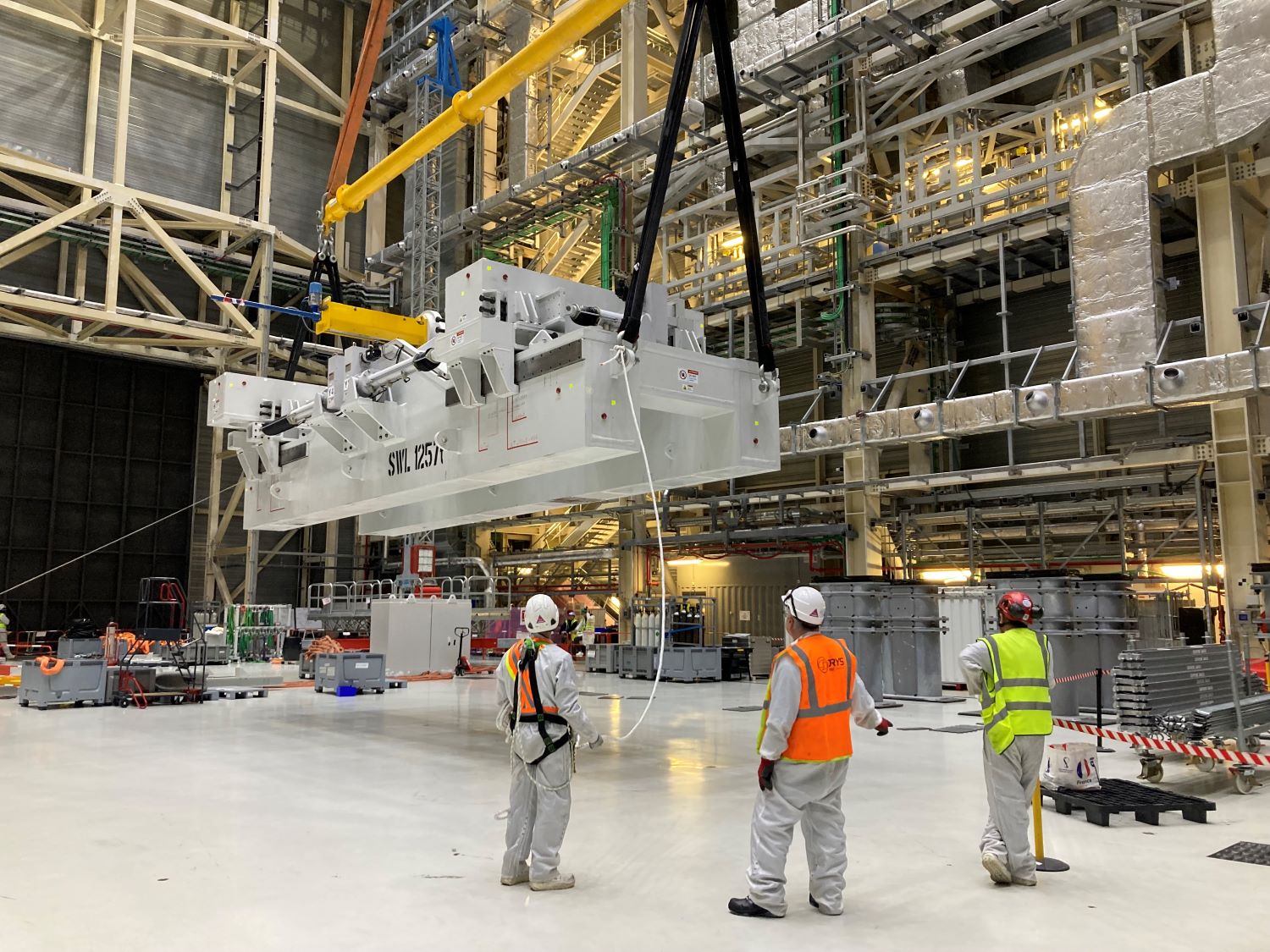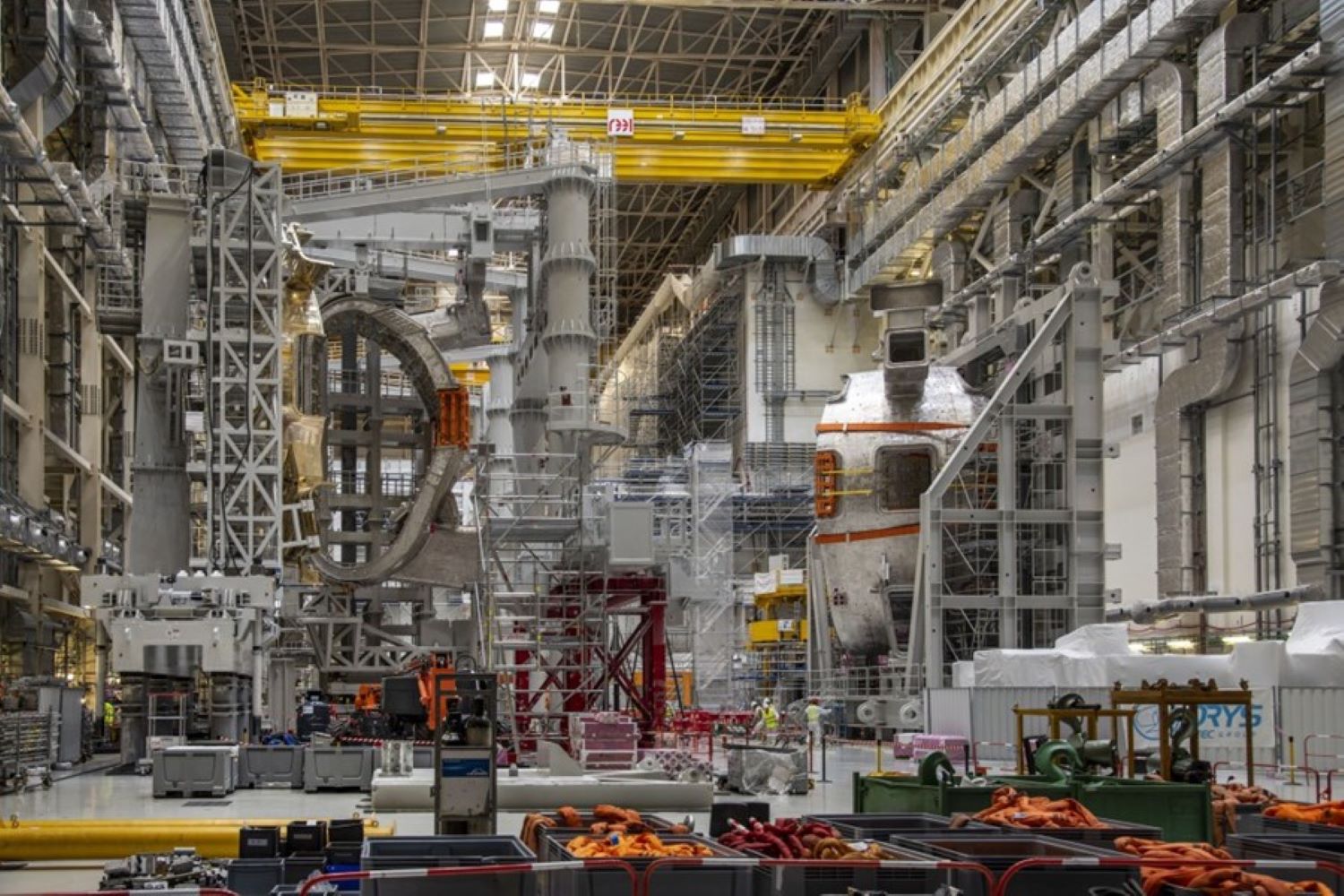Igniting a Stellar Revolution: Unleashing the Power of Fusion Energy for a Brighter Tomorrow

In an era characterized by pressing environmental concerns and the urgent need for sustainable energy solutions, the quest for clean and abundant power sources has taken center stage. Amidst this global challenge, fusion energy emerges as a beacon of hope, offering the promise of revolutionizing our world by providing a nearly limitless, safe, and environmentally friendly source of electricity.
Often referred to as the ‘holy grail’ of energy production, fusion energy harnesses the very essence of the sun itself to create power. In this article, we will delve into the captivating world of fusion energy, exploring the intricate science behind it, the remarkable advancements made thus far, and the immense potential it holds for reshaping our energy landscape.
Join us on this journey as we unlock the mysteries of fusion energy and envision a future powered by the fundamental processes of the universe.
Unleashing the Power of the Stars: The Science Behind Fusion Energy
In the quest for clean and abundant power sources, fusion energy has emerged as a highly promising solution. Fusion has the potential to provide a nearly limitless and environmentally friendly source of electricity. To comprehend the potential of fusion energy, it is crucial to understand the science behind it.
Fusion reactions involve the merging of light atomic nuclei, typically deuterium and tritium, to form a heavier nucleus. This process releases an immense amount of energy, as described by Einstein’s equation, E=mc². However, achieving fusion on Earth requires recreating the extreme conditions of temperature and pressure found in the core of the sun.
To initiate fusion, the fuel, usually in the form of plasma, must be heated to incredibly high temperatures, exceeding tens of millions of degrees Celsius. At these temperatures, the fuel becomes a highly ionized gas, where electrons are separated from their parent atoms, creating a plasma state. Plasma, often considered the fourth state of matter, is distinct from solids, liquids, and gases.
The high temperatures are essential to overcome the electrostatic repulsion between the positively charged atomic nuclei, allowing them to come close enough for the strong nuclear force to bind them together. This force, one of the fundamental forces of nature, is responsible for holding atomic nuclei together. When fusion occurs, it releases a tremendous amount of energy.

Confining plasma is a critical aspect of fusion energy. Since the fuel is in a highly charged state, it must be prevented from coming into contact with the walls of the fusion reactor. Various techniques are employed for plasma confinement, such as magnetic confinement and inertial confinement.
In magnetic confinement fusion, powerful magnetic fields are used to trap and control the plasma, preventing it from touching the walls. One prominent example is the tokamak design, which utilizes a toroidal chamber to confine the plasma. This approach is being pursued by projects like ITER, a multinational collaboration aiming to demonstrate the feasibility of fusion power on a large scale.
In inertial confinement fusion, a different approach is taken. The fuel is rapidly compressed and heated using high-energy lasers or particle beams. The intense pressure and heat cause the outer layer of the fuel to explode inward, generating a shockwave that compresses and heats the fuel core, triggering fusion reactions. Facilities like the National Ignition Facility (NIF) in the United States focus on inertial confinement fusion research.
While significant progress has been made in fusion research, numerous challenges remain. Sustaining the high temperatures and pressures required for fusion in a controlled and stable manner for extended periods is a major hurdle. Achieving a net energy gain, where the energy produced by fusion reactions exceeds the energy input required to sustain the reaction, is a crucial milestone for the commercial viability of fusion power.
Nonetheless, understanding the science behind fusion energy is the first step in unraveling its potential. With continued research and technological advancements, fusion has the capacity to transform our energy landscape, providing a safe, sustainable, and virtually limitless source of electricity.
Advancing Fusion Energy: Collaborative Breakthroughs and Technological Innovations
In recent years, significant advancements have been made in the field of fusion energy, bringing us closer to realizing its potential as a practical and sustainable source of power. Scientists and engineers worldwide have been actively involved in innovative research initiatives and ambitious international projects to push the boundaries of fusion technology.
One notable project is ITER (International Thermonuclear Experimental Reactor), a collaborative effort involving 35 nations. ITER aims to construct and operate the world’s largest tokamak fusion device, demonstrating the scientific and technological feasibility of fusion power on a large scale. The project serves as a crucial stepping-stone towards the development of commercial fusion power plants.
The tokamak design, characterized by a toroidal chamber and magnetic confinement of the plasma, has been extensively studied and refined. ITER’s construction and operation will provide valuable insights into plasma behavior, heat management, and overall system performance, contributing to the design and optimization of future fusion reactors.
In addition to tokamaks, other fusion reactor designs, such as stellarators and compact fusion devices, are being explored. Stellarators offer improved plasma stability and confinement, addressing some of the challenges faced by tokamaks. Compact fusion devices, often based on innovative concepts like magnetized target fusion and field-reversed configuration, focus on achieving fusion in smaller, more compact systems.

Advancements in plasma diagnostics, materials science, and superconducting technologies have played a crucial role in the progress of fusion energy. Sophisticated diagnostic tools allow scientists to study plasma properties, monitor plasma stability, and understand the intricate dynamics of fusion reactions. Materials research has led to the development of advanced alloys and ceramics capable of withstanding the extreme conditions inside a fusion reactor.
Moreover, high-temperature superconductors have shown great potential in enhancing the efficiency of magnetic field generation and reducing energy losses. These superconductors allow for more compact and powerful magnets, enabling the creation of stronger magnetic fields to confine the plasma and enhance fusion performance.
Alongside these technological advancements, computational modeling and simulation have become essential tools for understanding and optimizing fusion energy systems. High-performance computing enables detailed simulations of plasma behavior, magnetic field configurations, and the overall performance of fusion reactors. These simulations guide experimental research and help in the design of more efficient and stable fusion devices.
Collaboration between research institutions, academia, and industry has been instrumental in driving fusion energy advancements. Open sharing of knowledge, expertise, and resources fosters a collective effort towards solving the challenges associated with fusion. International collaborations, such as the exchange of researchers, joint experiments, and data sharing, enhance progress and accelerate the pace of development.
While significant strides have been made, there are still technical challenges to overcome. Achieving sustained plasma confinement, addressing plasma instabilities, and improving energy efficiency are ongoing areas of research. Continued investment in fusion research and development is crucial to further advance fusion energy and pave the way for its widespread implementation.
With each advancement, fusion energy comes closer to becoming a reality. The collective efforts of scientists, engineers, and policymakers around the world are propelling fusion technology forward, laying the foundation for a future where clean, safe, and abundant energy from fusion reactions powers our world.
Cracking the Fusion Code: Harnessing the Power of Stars for a Brighter Tomorrow
Troy Carter, the passionate U.S. Congressman representing Louisiana’s 2nd congressional district, boldly remarked, “the NIF shot only burned a small fraction of the fuel in the capsule.” With these words, Carter encapsulated the fascinating world of fusion energy and the ongoing quest to unlock its full potential.
In fusion experiments, such as those conducted at NIF, the fusion fuel contained within a tiny capsule is subjected to intense heat and pressure. The aim is to initiate fusion reactions, where the energy released surpasses the energy input. However, as Congressman Carter noted, only a fraction of the fuel is currently being utilized, highlighting the need for further breakthroughs in this complex field.
The pursuit of fusion energy represents an audacious endeavor that demands unwavering dedication and collaboration. Scientists, engineers, and policymakers like Congressman Carter are working tirelessly to advance fusion research, driven by the vision of a cleaner and more sustainable future. Their efforts inspire us to embrace new challenges, explore new frontiers, and ultimately unlock the immense power of fusion for the benefit of humanity.
While fusion energy holds immense promise as a clean and virtually limitless source of power, there are several significant challenges that need to be addressed before it can become a commercially viable reality. These challenges span scientific, engineering, and economic aspects of fusion technology.
One of the primary challenges is achieving sustained and controlled fusion reactions. Maintaining the high temperatures and pressures required for fusion over extended periods of time in a stable manner is a complex task.
Plasma instabilities, such as turbulence and disruptions, can hinder the smooth operation of fusion reactions and pose a threat to the integrity of the reactor. Scientists are actively researching advanced confinement techniques, innovative magnetic field configurations, and improved plasma control methods to overcome these challenges and achieve stable and sustained fusion.

Another critical challenge is the development of suitable materials to withstand the harsh conditions inside a fusion reactor. The intense neutron flux, high-energy particle bombardment, and extreme temperatures can cause severe damage to reactor components.
Research is focused on finding robust and resilient materials that can withstand prolonged exposure to these conditions while maintaining structural integrity. Advanced materials, such as specialized alloys, ceramics, and high-temperature superconductors, are being explored to enhance the durability and efficiency of fusion reactors.
One of the major hurdles in realizing fusion energy is achieving a net energy gain, where the energy produced by fusion reactions exceeds the energy input required to sustain the reaction. Currently, the energy required to initiate and sustain fusion reactions is greater than the energy produced, making it an energy-consuming process.
To achieve net energy gain, researchers are working on improving the efficiency of fusion reactions, optimizing energy capture and conversion systems, and reducing energy losses in the overall fusion process. Breakthroughs in these areas are essential for the economic viability and widespread adoption of fusion power.
Additionally, the availability and handling of tritium, one of the key fuels for fusion reactions, presents challenges. Tritium is radioactive and has limited natural abundance, requiring careful management, handling, and containment. Safely producing, storing, and utilizing tritium is a crucial aspect of fusion reactor operation, and research is focused on developing efficient tritium breeding techniques and safe fuel cycles.
Despite these challenges, the future prospects for fusion energy are promising. The ongoing advancements in fusion research, along with international collaborations and investments, are driving the field forward. The construction and operation of large-scale fusion devices, such as ITER, will provide valuable insights and pave the way for the development of practical fusion power plants.
As technology and understanding progress, smaller and more compact fusion devices, alternative reactor designs, and innovative fusion concepts are being explored. These endeavors aim to enhance the efficiency, scalability, and cost-effectiveness of fusion energy, bringing us closer to a future where fusion power plays a significant role in meeting our energy needs.
Furthermore, fusion energy offers inherent safety advantages over other energy sources, as the fuel supply is limited, and the fusion process itself does not generate long-lived radioactive waste. Fusion reactors produce clean and emission-free energy, reducing our reliance on fossil fuels and mitigating the environmental impact of power generation.
Bottom Lines
In conclusion, fusion energy represents a promising solution to our growing energy demands and environmental concerns. The journey to harnessing fusion power is a complex and ambitious one, requiring scientific breakthroughs, technological advancements, and international collaboration.
By embracing these challenges, exploring new frontiers, and pushing the boundaries of human knowledge, we can realize the dream of fusion energy and pave the way towards a brighter and more sustainable future for generations to come.








